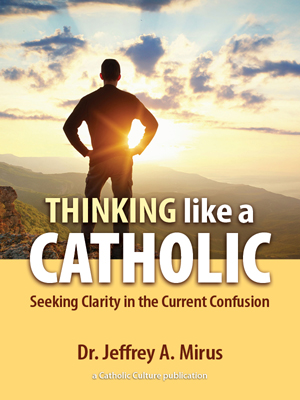Kiarostami: blurring the line between documentary and fiction
By Thomas Mirus and James Majewski ( bio - articles - email ) | Feb 27, 2024 | In Criteria: The Catholic Film Podcast
Listen to this podcast on: Apple Podcasts | Spotify | RSS feed | YouTube Channel
This is a listener-supported podcast! Thanks for your help!
Free eBook:

|
| Free eBook: Thinking like a Catholic |
There are many ways to make a movie. Only a few of those ways fit within the Hollywood mold. We believe that rather than taking pop culture as their sole model, Catholics and Catholic filmmakers should be open to a wide variety of artistic approaches. Thus, in this episode James and Thomas discuss the early career of the great Iranian director Abbas Kiarostami, who came up with an approach to filmmaking that is not just different from Hollywood, but different from anyone else in world cinema.
Kiarostami spent the first two decades of his career working for the Center for the Intellectual Development of Children and Young Adults in Tehran, making a plethora of fascinating movies either for or about children (fiction, documentary, and educational). In addition to exploring his concerns with childhood and education, he developed a great ability to direct non-professional actors and this allowed him to blur the line between documentary and fiction in his later films—or, perhaps, just to be honest about how human behavior is affected by the presence of a camera, even in a documentary setting.
If you only watch one of the films discussed in this episode, you might pick his 1987 feature Where Is the Friend’s Home?, an beautifully simple story about childhood, friendship and conscience. Through its patient attention to detail, this film allows us to rediscover a child’s-eye perspective on the world.
Where Is the Friend’s Home? is the first in a sort of trilogy of films Kiarostami shot in the region of Koker in northern Iran. That first installment, while one of his best works, is not actually typical of the unique style he developed soon after, which can be seen even within the trilogy itself. The simplicity of the first story is succeeded by two films that take on multiple perspectives and blur the line between fiction and real life. In a word, things get meta.
In the second film, …And Life Goes On, the director of the first film (played by an actor, not the real director) and his young son search for the two boys who acted in the first film, after the Koker region was devastated by a real-life earthquake that killed 50,000 people. Investigating real-life events through a fictional road trip, we get a new perspective on the simple fictional perspective of the first movie.
The third film, Through the Olive Trees, gets very complex (but in a most entertaining way). While shooting a scene in the second film, Kiarostami noticed some tension between the two young actors playing a married couple. So he invented a love story about these two actors, and the third film is about this story that takes place while that scene from the second film was being shot. Shot, we should add, by a director who is directing scenes involving the character of the “director” from the 2nd film—so we have two different actors playing directors, both of which represent the real director, Kiarostami. As avant-garde as this sounds, it’s a highly entertaining story that never could have been done as well by a director hewing to commercial instincts.
All comments are moderated. To lighten our editing burden, only current donors are allowed to Sound Off. If you are a current donor, log in to see the comment form; otherwise please support our work, and Sound Off!







